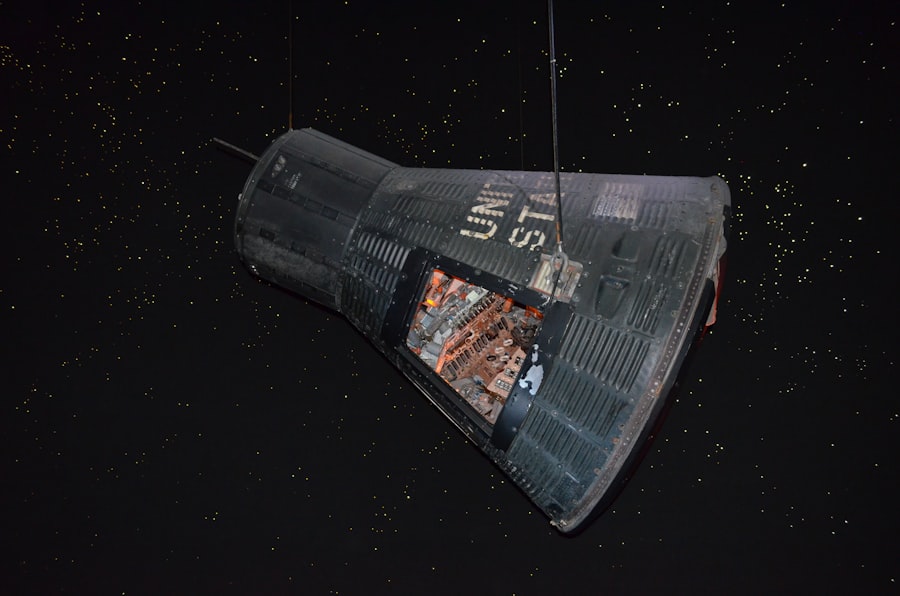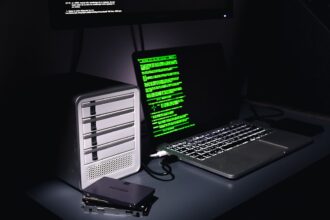In the modern battlefield, secure military satellite communications (MILSATCOM) play a pivotal role in ensuring operational effectiveness and strategic advantage. These systems facilitate real-time data exchange, enabling commanders to make informed decisions based on accurate and timely information. The ability to communicate securely across vast distances is not merely a convenience; it is a necessity that can determine the success or failure of military operations.
As military engagements become increasingly complex and multifaceted, the reliance on satellite communications has grown exponentially, underscoring the need for robust security measures. Moreover, secure military satellite communications are essential for maintaining the integrity of sensitive information. In an era where cyber threats and electronic warfare are prevalent, adversaries are constantly seeking ways to intercept or disrupt communications.
The consequences of compromised communications can be dire, potentially leading to mission failure or loss of life. Therefore, ensuring that military satellite communications are secure is not just about protecting data; it is about safeguarding national security and the lives of service members.
Key Takeaways
- Secure military satellite communications are crucial for national security and defense operations.
- Threats to military satellite communications include jamming, spoofing, and interference from adversaries.
- Encryption and authentication are essential for ensuring secure communication over satellite networks.
- Redundancy and resilience in satellite communication systems are necessary to maintain continuous and reliable connectivity.
- Anti-jamming and anti-spoofing techniques are critical for protecting military satellite communications from hostile attacks.
Threats to Military Satellite Communications
The landscape of threats to military satellite communications is diverse and evolving. One of the most significant threats comes from cyberattacks, where adversaries employ sophisticated techniques to infiltrate communication networks. These attacks can range from simple eavesdropping to more complex operations aimed at disrupting or manipulating communications.
As technology advances, so too do the methods employed by malicious actors, making it imperative for military organizations to stay ahead of potential threats. In addition to cyber threats, physical attacks on satellite infrastructure pose a considerable risk. Anti-satellite weapons, which can be launched from ground-based platforms or other satellites, have become a focal point of military strategy for several nations.
The potential for kinetic attacks on satellites raises concerns about the vulnerability of these critical assets in space. Furthermore, natural phenomena such as solar flares and space debris also threaten the operational integrity of satellite systems, necessitating a comprehensive approach to risk management.
Encryption and Authentication for Secure Communication

Encryption and authentication are foundational elements in securing military satellite communications. Encryption transforms data into a format that is unreadable to unauthorized users, ensuring that even if data is intercepted, it remains protected. Advanced encryption algorithms are employed to safeguard sensitive information transmitted via satellite links, making it exceedingly difficult for adversaries to decipher the content without the appropriate keys.
Authentication mechanisms further enhance security by verifying the identities of users and devices involved in communication. This process ensures that only authorized personnel can access sensitive information and participate in communication networks. Multi-factor authentication, which requires users to provide multiple forms of verification, is increasingly being adopted in military contexts to bolster security.
Together, encryption and authentication create a formidable barrier against unauthorized access and data breaches.
Redundancy and Resilience in Satellite Communication Systems
| Metrics | Description |
|---|---|
| Redundancy | The measure of backup systems or components in a satellite communication system to ensure continuous operation in case of failure. |
| Resilience | The ability of a satellite communication system to maintain its functionality and performance in the face of adversity or failure. |
| Availability | The percentage of time that the satellite communication system is operational and accessible for users. |
| Reliability | The probability that the satellite communication system will perform its intended function without failure for a specified period of time. |
Redundancy and resilience are critical components of military satellite communication systems. Redundancy involves the implementation of backup systems and alternative communication pathways to ensure continuity in the event of a failure or disruption. This approach is vital in military operations where communication breakdowns can have catastrophic consequences.
By establishing multiple channels for communication, military organizations can maintain operational effectiveness even when primary systems are compromised. Resilience goes beyond redundancy; it encompasses the ability of communication systems to adapt and recover from disruptions. This includes not only technical solutions but also strategic planning and training for personnel involved in satellite operations.
By fostering a culture of resilience, military organizations can ensure that they are prepared to respond effectively to unexpected challenges, thereby maintaining their operational capabilities in dynamic environments.
Anti-Jamming and Anti-Spoofing Techniques
As military satellite communications face increasing threats from jamming and spoofing, the development of effective countermeasures has become paramount. Jamming involves the deliberate transmission of signals that interfere with legitimate communications, rendering them unusable. To combat this threat, military organizations employ various anti-jamming techniques, such as frequency hopping and spread spectrum technologies.
These methods allow for dynamic adjustments in communication frequencies, making it more difficult for adversaries to disrupt signals. Spoofing, on the other hand, involves deceiving communication systems into accepting false signals as legitimate. This can lead to misinformation and operational confusion.
To counteract spoofing attempts, advanced signal processing techniques are utilized to verify the authenticity of incoming signals. By employing robust anti-jamming and anti-spoofing measures, military satellite communications can maintain their integrity and reliability in the face of evolving threats.
Satellite Signal Monitoring and Interference Detection

Effective monitoring of satellite signals is essential for maintaining secure military communications. Continuous surveillance allows for the detection of anomalies that may indicate interference or unauthorized access attempts. By employing sophisticated monitoring systems, military organizations can identify potential threats in real-time and take appropriate action to mitigate risks.
Interference detection is particularly crucial in environments where multiple entities may be operating within the same frequency bands. The ability to distinguish between legitimate signals and potential threats enables military personnel to respond swiftly to any disruptions. Additionally, advancements in artificial intelligence and machine learning are enhancing the capabilities of signal monitoring systems, allowing for more accurate detection and analysis of interference patterns.
Secure Ground Stations and Network Infrastructure
The security of ground stations and network infrastructure is integral to the overall security of military satellite communications. Ground stations serve as critical nodes for transmitting and receiving data between satellites and command centers. Ensuring that these facilities are fortified against physical and cyber threats is essential for maintaining operational integrity.
Network infrastructure must also be designed with security in mind. This includes implementing firewalls, intrusion detection systems, and secure communication protocols to protect against unauthorized access.
By prioritizing the security of ground stations and network infrastructure, military organizations can enhance the resilience of their satellite communication systems.
Collaboration with International Partners for Secure Satellite Communications
In an increasingly interconnected world, collaboration with international partners is vital for enhancing the security of military satellite communications. Joint exercises and information sharing among allied nations can lead to improved understanding of potential threats and best practices for securing communication systems. By working together, countries can develop standardized protocols that enhance interoperability while ensuring robust security measures are in place.
Furthermore, international partnerships can facilitate the sharing of technological advancements in encryption, anti-jamming techniques, and signal monitoring systems. Collaborative research initiatives can lead to innovative solutions that address common challenges faced by military organizations worldwide. By fostering strong relationships with international partners, military forces can create a more secure environment for satellite communications on a global scale.
Securing Satellite Constellations and Orbits
The security of satellite constellations and their designated orbits is a critical aspect of military satellite communications. As more countries invest in space capabilities, the competition for orbital slots intensifies, raising concerns about potential collisions and interference among satellites. Ensuring that satellites are securely positioned within their orbits is essential for maintaining operational effectiveness.
Moreover, securing satellite constellations involves implementing measures to protect against anti-satellite weapons and other hostile actions that could compromise their functionality. This includes developing strategies for maneuvering satellites in response to emerging threats and establishing protocols for rapid recovery in case of an attack. By prioritizing the security of satellite constellations and orbits, military organizations can safeguard their communication capabilities in an increasingly contested space environment.
Training and Education for Secure Satellite Communication Operations
Training and education play a crucial role in ensuring that personnel involved in military satellite communications are equipped with the knowledge and skills necessary to operate securely. Comprehensive training programs should encompass not only technical aspects but also an understanding of potential threats and best practices for mitigating risks. Regular drills and simulations can help personnel develop proficiency in responding to various scenarios involving communication disruptions or security breaches.
Additionally, fostering a culture of security awareness among all personnel involved in satellite operations is essential for maintaining vigilance against potential threats. By investing in training and education, military organizations can enhance their overall readiness and resilience in securing satellite communications.
Future Challenges and Innovations in Securing Military Satellite Communications
As technology continues to evolve at a rapid pace, future challenges in securing military satellite communications will likely become more complex. The proliferation of small satellites and commercial space ventures introduces new vulnerabilities that must be addressed through innovative solutions. Additionally, advancements in quantum computing may pose new threats to traditional encryption methods, necessitating ongoing research into post-quantum cryptography.
Innovations such as artificial intelligence-driven cybersecurity measures hold promise for enhancing the security of military satellite communications. These technologies can analyze vast amounts of data in real-time, identifying patterns indicative of potential threats more efficiently than human operators alone. As military organizations navigate these challenges, a proactive approach that embraces innovation while prioritizing security will be essential for maintaining effective satellite communication capabilities in the future.
As the landscape continues to evolve, military organizations must remain vigilant and adaptable to ensure that their communication capabilities remain secure in an increasingly complex world.
In the ever-evolving landscape of military communications, securing satellite communications has become a critical priority. An insightful article on this topic can be found on In The War Room, which delves into the latest advancements and strategies for safeguarding these vital communication channels. The article discusses various technologies and protocols that are being implemented to ensure the integrity and confidentiality of military satellite communications. For a deeper understanding of these developments, you can read the full article by visiting In The War Room.
🔍WATCH THIS! The Secret Weakness That Will Break The US Military🧭
FAQs
What are military satellite communications?
Military satellite communications refer to the use of satellite technology to facilitate secure and reliable communication for military operations. These communications are used for a wide range of purposes, including command and control, intelligence gathering, and coordination of military activities.
Why is securing military satellite communications important?
Securing military satellite communications is crucial to protect sensitive information and ensure that military operations are not compromised by unauthorized access or interference. Without proper security measures, military satellite communications could be vulnerable to hacking, interception, or jamming by hostile actors.
What are some of the security challenges for military satellite communications?
Some of the security challenges for military satellite communications include the need to protect against cyber attacks, ensure encryption of sensitive data, and defend against physical threats to satellite infrastructure. Additionally, the increasing sophistication of adversaries and the proliferation of anti-satellite weapons pose significant challenges to securing military satellite communications.
What technologies are used to secure military satellite communications?
Technologies used to secure military satellite communications include advanced encryption methods, secure satellite communication protocols, anti-jamming and anti-spoofing techniques, and secure ground-based control systems. Additionally, measures such as frequency hopping and spread spectrum techniques are employed to enhance the security of military satellite communications.
How is the security of military satellite communications constantly evolving?
The security of military satellite communications is constantly evolving to address emerging threats and technological advancements. This includes the development of more robust encryption algorithms, the implementation of resilient satellite architectures, and the integration of artificial intelligence and machine learning for threat detection and response. Additionally, international collaboration and coordination are important for addressing global security challenges related to military satellite communications.




